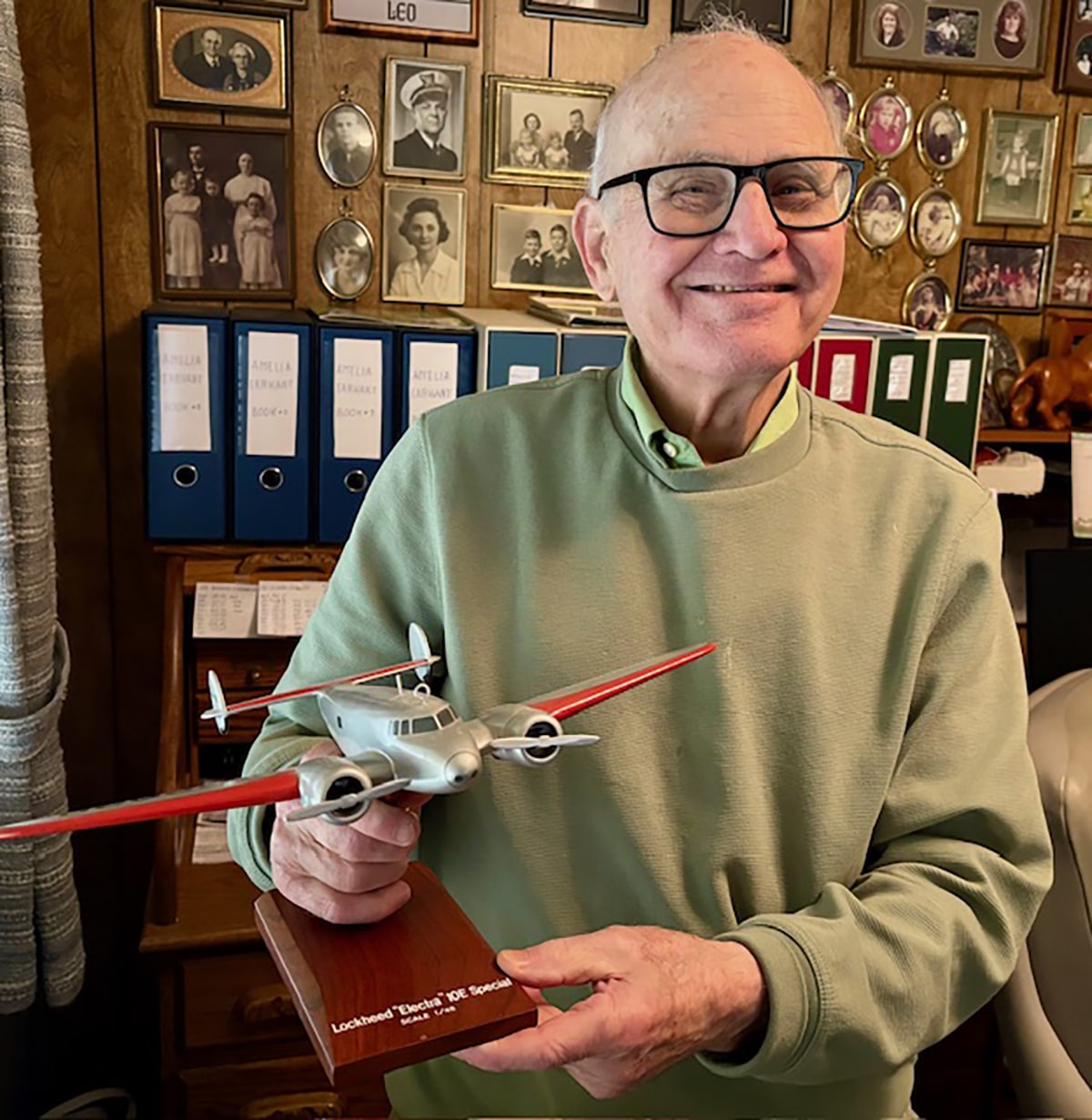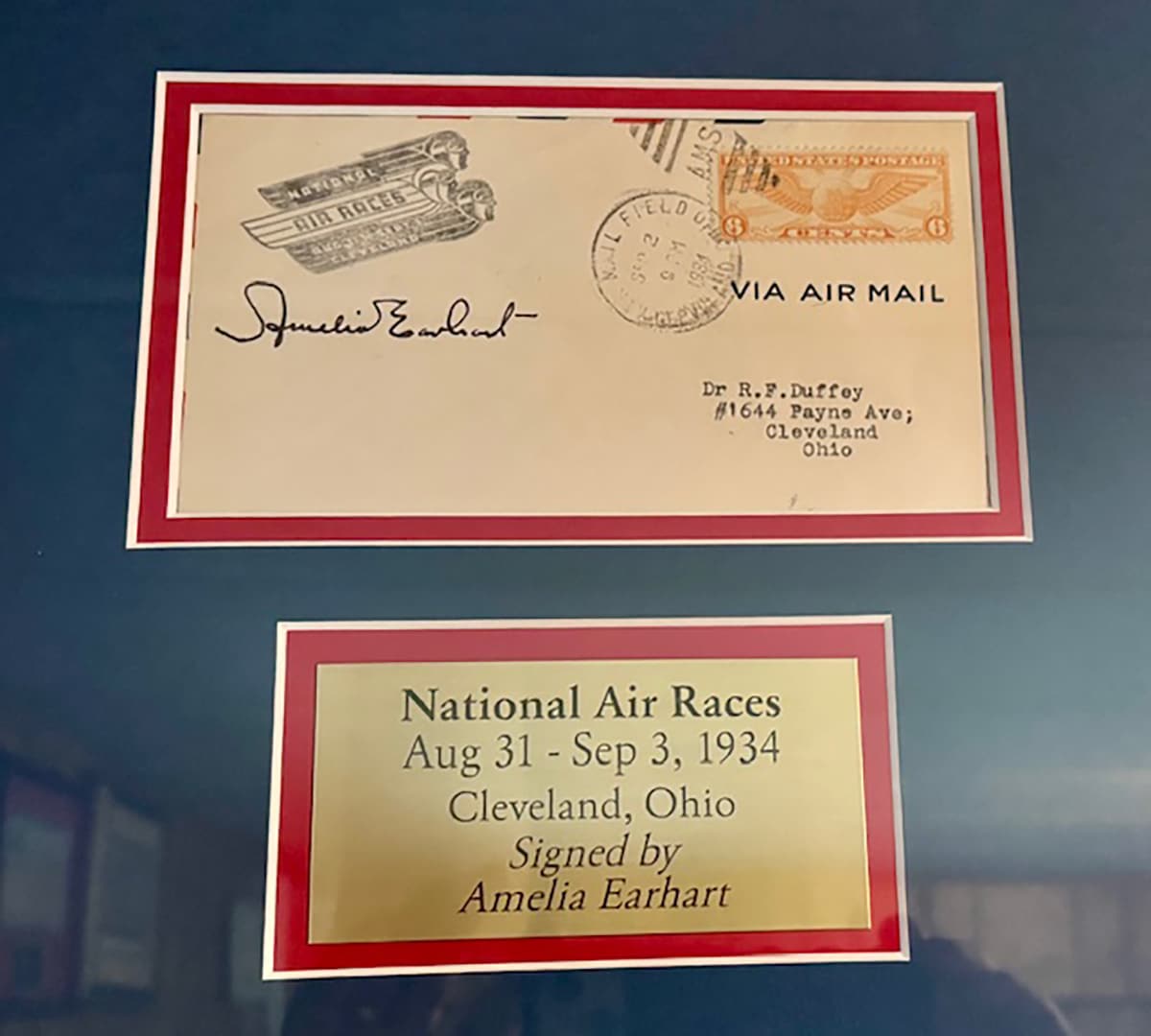Community
In the Margins | Where’s Amelia? This family’s legacy is to search for the truth
Even on my best day, my two granddaughters, ages 2 and 4, outperform me whenever we are reading our Where’s Waldo books. They take great pleasure in watching me search relentlessly for Waldo amid a sea of quirky characters on the page. Did I mention they are adorable?
Community Sponsor
Community stories are made possible in part by Peninsula Light Co, a proud sponsor of Gig Harbor Now.
When I eventually surrender, they take even more pleasure in pointing out that Waldo was hiding right under my nose the whole time. Always, the joy is in the search.
For 87 years, three generations of the Bellarts family have passionately experienced their own joy of the search. Their dedicated exploration of one of history’s greatest mysteries makes my hunt for Waldo look like the child’s play it is.
An aviation legend
The Bellarts’ relentless search is for Amelia Earhart, the iconic aviation pioneer whose plane disappeared over the Pacific Ocean on a calm, cloudy day on July 2, 1937.
During the 1930s, Amelia Earhart cast a new mold for self-driven, adventurous, independent women in an age when men had a firm grip on the controls of most cultural and professional endeavors. Five years before her disappearance, she became the first woman to fly solo, nonstop across the Atlantic. She took off from Newfoundland and landed in a pasture in Londonderry, Ireland, after 15 hours, 18 minutes in the air. She then set additional aviation records, endorsed products, gave lectures, and wrote books to tell us her story.

Amelia Earhart on the tarmac with her Lockheed airplane.
Her gregarious and graceful approach to life allowed her to embrace both glowing celebrity and gritty achievement. Imagine the visionary charisma of Taylor Swift and the unyielding strength of Serena Williams, but with a boyish wind-blown haircut and gray coveralls.
A radioman’s search for truth continues
Gig Harborite Dave Bellarts and his family have nurtured a multi-generational passion for solving the ongoing mystery of Amelia Earhart. Dave, 48, grew up on Wollochet Bay and graduated from Bellarmine Prep, Gonzaga University and UW-Tacoma. He’s a local Ham radio operator and a member of the Burley Amateur Radio Club. His kids, ages 7 and 9, already are wired for radio; they are licensed as part of local emergency radio networks, including the Peninsula Community Emergency Communications team.
Dave’s connection to Amelia is via his grandfather, Lt. Leo G. Bellarts Sr., who was the chief radioman aboard U.S. Coast Guard cutter Itasca. Lt. Bellarts was one of the last people to hear Amelia’s voice before she disappeared.

Lt. Leo Bellarts Sr. fulfilled his life ambition as radioman in the U.S. Coast Guard. He was one of the last to hear Amelia’s radio voice.
In 1937, the Itasca was anchored just northwest of Howland Island, about 1,700 miles southeast of Hawaii, when Amelia’s fateful radio call was logged.
“Itasca, we must be on you but cannot see you. Gas is running low. Been unable to reach you by radio. We are flying at 1,000 feet,” said Amelia in one of her final radio transmissions. After describing a perplexing north-south course, her transmissions halted with a single word: “wait…” Nothing more was ever heard from her.
For decades, the searching and speculation – everything from undersea exploration to inventive conspiracy theories – have persisted. Today, one of the foremost experts on all things Amelia is Dave’s uncle, also named David M. Bellarts. (To avoid confusion, I will refer to the elder uncle as David and the younger nephew as Dave.)
Entering the unofficial Amelia Earhart museum
David, 89, is the only surviving son of chief radioman Lt. Bellarts. David’s older brother, Leo Bellarts Jr., also of Gig Harbor, died in 2022 at age 89.

David Bellarts shows off his model of the missing Electra, a Lockheed 10-E. Photo by Chris Phillips
David is an avid collector of records, artifacts and remembrances involving Amelia. Earlier this month, he welcomed me into his well-kept mobile home tucked into the industrial complex surrounding Tacoma’s Joint Base Lewis McChord.
David’s eyes and smile lit up when I asked about Amelia Earhart. The back room of his home is a small study lined with books and posters. It is essentially the unofficial museum of Amelia’s life.
Pose a question and he’s like a human, hard-copy version of Google’s search engine, pulling multiple volumes of impeccably organized documents to explain his detailed answers. Times, dates, places are recorded. Radio logs, signed envelopes, post cards, and all manner of printed materials are at his fingertips.
David owns 163 books written by or about Amelia, some of them first editions signed by the aviator herself. He has donated the original radio logs for safekeeping to archives in Washington, D.C.
‘She was in panic mode’
“I can remember my father telling me, ‘I can still hear her voice on that radio,’” said David. “She was in panic mode.”
Amelia’s final broken transmissions would haunt Lt. Bellarts for the remainder of his life. He retired from the service in 1945 after serving on 15 ships. He died in 1974 at age 68. David said Lt. Bellarts was a good father even if he was gone a lot of the time. He loved radio work, and he loved serving in the Coast Guard. “It’s the only thing he had ambition for,” said David.
During the 1930s, David said his father even turned down a major league baseball opportunity as a potential pitcher with the New York Giants. His singular professional aspiration was to serve as a Coast Guard radioman.
Skilled pilot, a stubborn radio operator
Based on the clarity and strength of that day’s radio signal, Lt. Bellarts knew Amelia’s plane had to be close to the ship. He went out on deck to scan the skies, but he never spotted the Electra, a distinctive twin-engine Lockheed 10-E.
David described the radiomen’s love-hate relationship with Amelia. “They were so frustrated with her because she had a habit of turning off her radio after her outgoing transmissions,” perhaps to conserve battery life. “She was known for being a little stubborn, and she was sometimes terrible with the radio.”

In the 1930s, Amelia’s infectious personality and image became a prophetic model for self-driven women.
As passionate as she was about flying, Amelia was less interested in communications protocols, radio training, and technical details.
In a 17-page paper he co-wrote about the incident, David described a recorded interview with his father: “The Itasca radio operators were getting disgusted with her for not staying on schedule and (for) just hanging up after just a few words… She’d call, come on and just say, ‘the weather’s overcast,’ and then just hang up, not go ahead … All she had to do was hold down the key and we could have taken a bearing on her from the ship’s directional finder,” said Lt. Bellarts in the recording.
An expert’s theory
Nearly nine decades later, the Bellarts family continues their radio work and an ongoing quest for truth related to Amelia’s final aviation act. With all his accumulated research and based on his father’s firsthand experiences, David is convinced that Amelia’s plane ran out of fuel somewhere north of Howland Island after encountering headwinds during the 2,500-mile flight from Lae, New Guinea.

Equipped with a marked-up chart of the Pacific, David Bellarts explains his belief that the plane’s wreckage will be found near Howland Island. Photo by Chris Phillips
“I hope it’s found someday. I really do,” said David. “It’s got to be somewhere near Howland Island.”
Dave Bellarts agrees with his uncle’s assessment. “Ground wave (radio) signals over open ocean begin around the 200-mile mark, building in strength as was the case with the Electra as it traveled closer to the Itasca. She was very close to Howland Island, and she was out of fuel. If Amelia Earhart or (her navigator) Fred Noonan ended up on some island 400 miles away, they did not arrive there in the Electra.”
A fresh find on the ocean floor
This year, the Bellarts found renewed hope that Amelia’s plane wreckage had been located. Deep Sea Vision, a marine exploration company headed by pilot and former real estate investor Tony Romeo, captured a grainy sonar image from the ocean floor about 100 miles from Howland Island.
After 11 months of searching 5,200 square miles of sea floor, the 16-member research crew captured a remarkable image using an unmanned submersible drone at a depth of 5,000 meters. The crew needed about 90 days to sort through all the data before zeroing in on the promising image.
The dramatic discovery was the size and shape of the Lockheed airplane, including its distinctive twin vertical stabilizer at the tail.

This year’s uncanny sonar image when compared to the scale and shape of the missing Lockheed 10-E.
Unfortunately, the exploration team’s closer sea-floor inspection recently revealed the image was a rocky outcrop that was painfully mimicking the Electra. False hope – just an embedded rock masquerading as a famous airplane.
In November, Tony Romeo announced the disappointing news but committed to continue the search. “We fully expect to find Amelia’s plane wherever she may be hiding. The search map that we’ve created has added a great deal of intrigue to where Amelia could have possibly disappeared,” he wrote on Instagram.
The exploration ship is now bound for America Samoa to complete a sea floor mineral project. As good sports in the hunt, Tony and crew have posted an online offering of a company T-shirt that reads, “Deep Sea Vision… We Find Rocks.”

Is it a plane or a rock? Deep Sea Vision last month revealed its find was a disappointing false alarm.
Stay tuned for the next episode
Amid this year’s fresh intrigue, David stays in close contact with Tony Romeo and other researchers as the hunt continues.
“I told him to keep looking, and that I only want to hear one word from him when he calls next time – BINGO!” said David with a broad grin.
As this mystery evolves like some sort of Netflix docuseries, the Bellarts can take solace in the fact that Amelia Earhart would admire their headstrong commitment to her history. Wherever she rests, and in whatever manner she died, her legacy of aviation milestones and her celebrated drive for success are being kept alive by the family of a dedicated Coast Guard radioman, Lt. Leo Bellarts.

David Bellarts is a one-man search engine when it comes to finding specific records related to Amelia Earhart. Photo by Chris Phillips
In the meantime, after my conversations with the Bellarts, I’m inspired that one day I might match my granddaughters’ prowess as we keep exploring the pages of Where’s Waldo. The next time we are reading together, I’m going to remind those adorable girls that they can accomplish their biggest dreams, but they have some mighty big shoes to fill if they want to keep pace with Amelia Earhart.
More info for your own search…
NPR story, December 2, 2024: Ocean explorers hoped they photographed Amelia Earhart’s plane
Letters from Lt. Leo Bellarts, 1961: The radioman writes to author Fred Goerner about all the speculation
Keep up with Deep Sea Vision search projects: Tony Romeo and team will keep looking for the Electra
Try on a “We Find Rocks” T-shirt from Deep Sea Vision?

Envelopes signed by Amelia Earhart are among the collectable items carefully preserved in David Bellart’s unofficial museum.

Christopher Phillips, a Gig Harbor community member since 1981 and former managing editor of The Peninsula Gateway, is a retired journalist and communications executive who worked for Russell Investments, the Port of Tacoma, and the Washington State Investment Board. His column, In the Margins, explores our community’s people, places and experiences, some of which might not otherwise come to our attention. Suggestions are welcome to [email protected].

